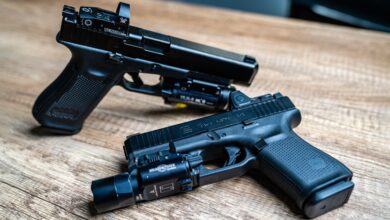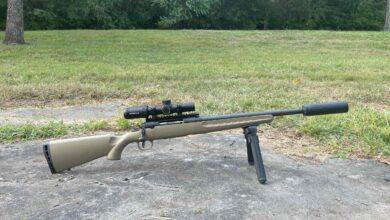These units are getting the Army’s newest rifle and machine gun first

VIRGINIA BEACH, Va. – The Army has sped up and shifted its fielding of the Next Generation Squad Weapon rifle to Pacific-focused and special operations units in the coming months and next year.
The Next Generation Squad Weapon program includes a 6.8mm rifle and automatic rifle to replace the 5.56mm M4 and Squad Automatic Weapon, respectively.
The NGSW also includes a fire control, which contains advanced ballistics and aiming assistance not available in currently fielded rifle optics.
“We haven’t fielded a gun in this magnitude to the close combat force since the M16 started fielding in 1967,” said Col. Jason Bohannon, who manages the soldier lethality portfolio at Program Executive Office-Soldier.
The Army fielded the NGSW package to a battalion in the 1st Brigade, 506th Infantry Regiment, 101st Airborne Division, in late March with the XM7 rifle, XM250 automatic rifle and the XM157 fire control.
This summer, the 30th Armored Brigade Combat Team with the North Carolina Army National Guard also received the weapons.
RELATED
The Army is ramping up production of the rifle, automatic rifle, optic and ammunition to field to the close combat and adjacent forces ahead of upcoming deployments, officials said.
The Army is building a separate ammunition production line at the Lake City Army Ammunition Plant in Missouri, while Sig Sauer, the firearm producer, is churning out 6.8mm rounds at a facility in Arkansas, officials said.
The current focus is to stockpile enough 6.8mm ammunition for training, deployment and war reserves for all Army close combat units, Bohannon said.
A host of units are slated to get a mix of the combined rifle, automatic rifle and optic, while others will receive only the rifle for now, according to information presented by Army officials on Thursday at the National Defense Industrial Association’s annual Future Force Conference.
“We’re fielding as the material is coming off the line, directly to the units,” Bohannon said.
The weapon combo gives shooters 7.62mm performance or better as far as range, lethality and barrier penetration, all noticeably more capable than the existing 5.56mm round for the individual carbine and squad-level light machine gun.
With increased distance and barrier penetration, Army planners expect soldiers to be more effective at distances in more modern, urban-type battlefield settings.
Reports on poor performance at range and ineffective barrier penetration by the 5.56mm round during the wars in Iraq and Afghanistan pushed Army leaders and developers to look for a better round for the close combat force.
There are about a dozen units in the NGSW fielding pipeline for fiscal year 2025, which begins Oct. 1. They include:
- From October to December, the Army Reserve’s 100th Infantry Battalion, 442nd Infantry Regiment at Fort Shafter, Hawaii; elements of the 25th Infantry Division, at Schofield Barracks, Hawaii; the Army’s Ordnance School, at Fort Gregg-Adams, Virginia.
- From January to March, the 3rd Brigade, 101st Airborne Division at Fort Campbell, Kentucky; 2nd Battalion, 75th Ranger Regiment at Joint Base Lewis-McChord, Washington; 1st Brigade, 1st Armored Division, at Fort Bliss, Texas.
- From April to June, the 1st Battalion, 75th Ranger Regiment at Hunter Army Airfield, Savannah, Georgia.
- From July to September, the 1st Battalion, 34th Armored Brigade Combat Team with the Minnesota Army National Guard; multiple 10th Mountain Division battalions, Fort Drum, New York.
The NGSW is currently confined to close combat units such as infantry, reconnaissance, combat engineers and associated combat units. The conventional non-close combat Army is expected to continue its use of the 5.56mm M4 and M249 SAW for the foreseeable future, officials have said.
Todd South has written about crime, courts, government and the military for multiple publications since 2004 and was named a 2014 Pulitzer finalist for a co-written project on witness intimidation. Todd is a Marine veteran of the Iraq War.







